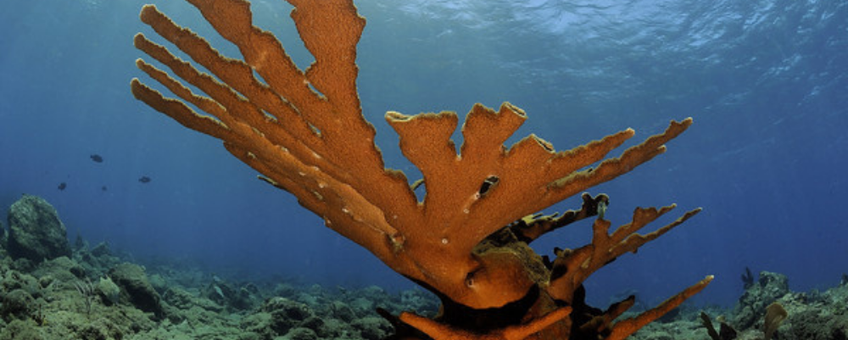
New technique enriches genetic diversity of elkhorn coral
Carmabi, Dutch Caribbean Nature Alliance (DCNA)Genetic evolution allows entire populations to adapt, over many generations, to their local environments. However, environmental conditions are now changing at an accelerated rate, and in some cases, are outpacing the ability of species to adapt. This is where Assisted Gene Flow (AGF) comes into play; this conservation intervention involves directly introducing genetic diversity into at-risk populations. In other words, researchers can now influence the reproductive process of threatened species in order to introduce new genetic diversity and thus facilitate faster evolution.

Elkhorn coral
Corals are excellent candidates for the Assisted Gene Flow technique, especially the IUCN 'critically endangered' elkhorn coral (Acropora palmata). Estimates place the decline in their populations around 95 percent since the 1980s. Furthermore, the corals have struggled to keep up with changing water conditions and have documented reproductive issues. Mature corals are difficult to relocate for the purposes of AGF and coral gametes (reproductive cells) lose viability within a few hours. Researchers have therefore used cryopreservation to achieve AGF in this species.
Within the region, there are two distinct populations of elkhorn coral: one from the northwestern Atlantic and one from the Caribbean. A central, mixed zone exists near Puerto Rico. Over time, these populations have evolved to their unique thermal and oceanographic environments.
New techniques
A recently published report highlighted the successful demonstration of using AGF to fertilize elkhorn corals. This research was a collaborative effort by CARMABI, Smithsonian Conservation Biology Institute, Penn State University, Florida Aquarium Center for Conservation, and Mote Marine Laboratory. Using cryopreserved sperm from eastern and central Caribbean (Florida and Puerto Rico) elkhorn corals, researchers were able to fertilize eggs from western Caribbean (Curaçao). By mixing these genetic pools, researchers may be able to accelerate region-wide adaptations to climate change.

Future of conservation
In addition to achieving the highest ever survival rate for elkhorn coral juveniles, these researchers were able to generate the largest living wildlife population ever created from cryopreserved cells. This research proved the viability of using cryopreserved genetic material to increase genetic diversity. The future of coral conservation will require innovative techniques, such as AGF, to help keep pace with the accelerated changed due to climate change. By identifying and cryopreserving genetic material for threatened corals, crossbreeding with more tolerant populations may be the key to preserving these species in the future.
To read the full report, please visit the Dutch Caribbean Biodiversity Database.
Text: Dutch Carribean Nature Alliance
Photos: Hans Leijnse; Duncan MacRae
